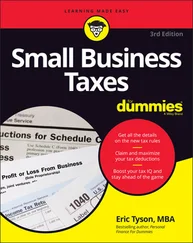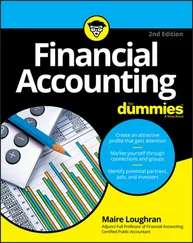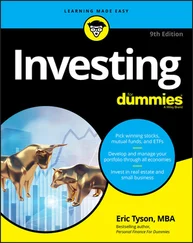1 ...6 7 8 10 11 12 ...16 The Federal Reserve raised interest rates in 1928–1929 to curb speculation in the financial markets. “This action slowed economic activity in the United States. Because the international gold standard linked interest rates and monetary policies among participating nations, the Fed’s actions triggered recessions in nations around the globe,” according to the St. Louis Federal Reserve. To rein in speculative buying of stocks, the Fed should have raised the stock margin purchase requirement from its low level of 10 percent (note that today it is at 50 percent).
The Smoot-Hawley Tariff Act passed by Congress and signed into law in 1930 led to a trade war which depressed global trade. The United States slapped 20 percent tariffs on imports to the United States, which set off retaliatory tariffs by many other countries.
Economic problems and falling stock prices led to depressed consumer confidence and a run on banks. The Federal Reserve failed to step in and act as the lender of last resort, and the resulting bank failures contributed to the further downward economic spiral.
The Federal Reserve allowed the nation’s money supply to drop 30 percent, which led to an equivalent, deflationary price decline. With all of the previously mentioned economic problems, the Fed added to the misery by allowing the nation’s money supply to shrink 30 percent from 1930 to 1933, which led to an approximate 30 percent deflationary decline in prices. This deflation had the impact of increasing the burden of debt among those who owed money and further harmed the overall economy.
In addition to the stock market being crushed, the unemployment rate in the United States stayed above 10 percent for more than a decade — from 1931 through 1941. In fact, it hit a high of 25 percent in 1933 and was above 20 percent for four straight years around that time.
Over time, economists and others have come to realize how the government’s response caused and greatly worsened the Great Depression. Furthermore, reforms coming out of this period led to the Federal Reserve becoming a “modern central bank” and lender of last resort.
Many folks believe that wars are bad for the financial markets and economy, but often they are not. For sure, unforeseen negative events like the attacks on Pearl Harbor (December 7, 1941) can cause a short-term decline/shock. But coming out of the Great Depression and the high unemployment rate of that period, World War II led to increased demands for various manufactures and other products needed for the wartime efforts. Hiring and output soared, and unemployment quickly declined to less than 2 percent.
Stock prices were reasonably stable during this period, rising about 30 percent over six years. After an initial modest rally following the outbreak of the war, an excess corporate profits tax enacted by Congress squashed the stock market upswing. The attack on Pearl Harbor triggered a near 10 percent decline. Stocks then resumed their rally when the Allies began to get the upper hand.
Coming out of World War II, the U.S. government had a huge debt load. This led the government and Federal Reserve to keep interest rates low in the years following the war to help service the large U.S. government debt. Keeping rates low hurt bondholders who were stuck receiving low interest rates, and when rates finally did rise, bond prices dropped, reducing bondholders’ returns through declining bond market values.
Arab oil embargo and Watergate/Nixon’s resignation
As a young teenager, I first began my investing experiences back in the mid-1970s when my father was laid off from his job and was handed a modest balance that he had to direct. Back then the Dow Jones Industrial Average was vacillating between 800 and 1,000 if you can believe that!
I remember 1974 well. That time period made a major impression on me. Stocks got hammered and experienced a waterfall decline as they did during the height of the 2008 financial crisis. From a peak of 1,000 in late 1973, the Dow plunged under 600 by the late summer of 1974. The country and economy had many problems. Folks were highly disillusioned with government after Vice President Agnew resigned (due to an income tax evasion scandal) and then so did President Richard Nixon (due to Watergate).
There was a war raging in the Middle East, and oil supplies were being cut off due to the Arab Oil Embargo (drivers back then remember the long lines at gas stations). Inflation was surging and broke 10 percent annually. The unemployment rate was surging to 9 percent.
The 1970s was a bad period for stocks and the economy. President Nixon instituted wage and price controls and oversaw a sagging economy with rising inflation. After Nixon resigned and his vice president, Gerald Ford, took over, he ended up losing the next presidential election to Jimmy Carter, who continued many of the same problematic economic policies of the Nixon years.
With rising and stubbornly high inflation, the Federal Reserve finally raised interest rates to double-digit levels to stop the cycle. Those actions, combined with the pro-growth economic policies of President Ronald Reagan, who was elected in 1980, finally ushered in a sustained period of lower inflation, lower interest rates, consistently strong economic growth, lower unemployment, and rising stock prices.
9/11 terrorist attacks and recession
Generally speaking, the 1990s were a good decade for the U.S. economy and financial markets. The economy grew briskly after a brief recession early in the decade, unemployment trended down, and stock prices enjoyed one of the greatest bull runs ever. And this came on the heels of the largely good 1980s.
Interest rates and inflation trended lower, and by the end of the decade, the federal government was actually enjoying a budget surplus — imagine that! A strong economy produced booming tax revenues, and believe it or not, the Congress showed restraint in their spending.
By the late 1990s, however, warning signs began accumulating. Stock prices, especially in the increasingly popular internet and technology sector, reached frothy levels. Companies with no profits and little revenue were going public and being bid up.
In the final 18 months leading up to its peak in early 2000, the tech-heavy Nasdaq index rose more than 300 percent and the price-earnings ratio of the stocks in the index exceeded 100! A book published in 1999, Dow 36,000 by James Glassman and Kevin Hassett (published by Crown Business), said that stocks should overall be triple their then current (inflated) valuations. (These authors might finally be right about the Dow level more than two decades later!)
The rise of cheap online trading lured in novice and naïve investors and also encouraged more frequent trading. This period saw the rise of day traders who jumped in and out of particular stocks, sometimes holding a stock for mere hours. Not surprisingly, studies have found that increased trading leads to reduced returns.
As the dot-com bubble began to unravel and the collapse of internet and technology stock prices and companies began to spill over into the broader economy, a recession began to unfold. And then the 9/11 terrorist attacks happened in late 2001, and that further undermined consumer confidence and the economy. A number of high-profile corporate accounting scandals — for example, Enron and WorldCom — also hit investors and their confidence.
The bear market in the early 2000s was a big one, especially in the technology and internet space. Check out the declines of these U.S. stock market indexes:
Dow Jones Industrial Average: 39 percent
S&P 500: 49 percent
Nasdaq: 78 percent
Dot-com Index: 95 percent
Читать дальше












